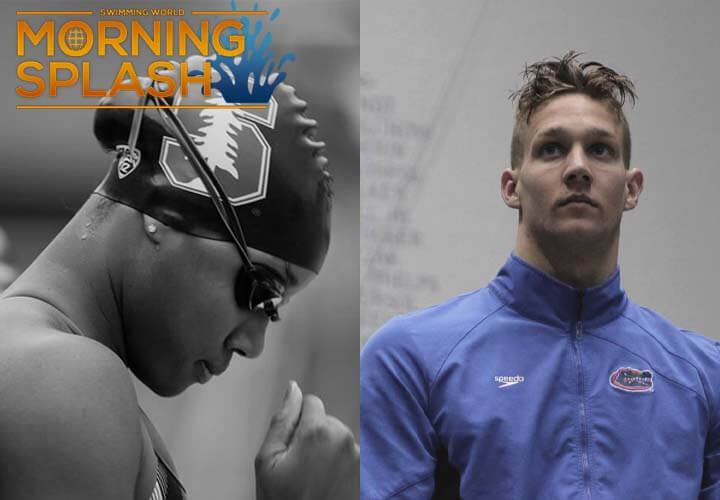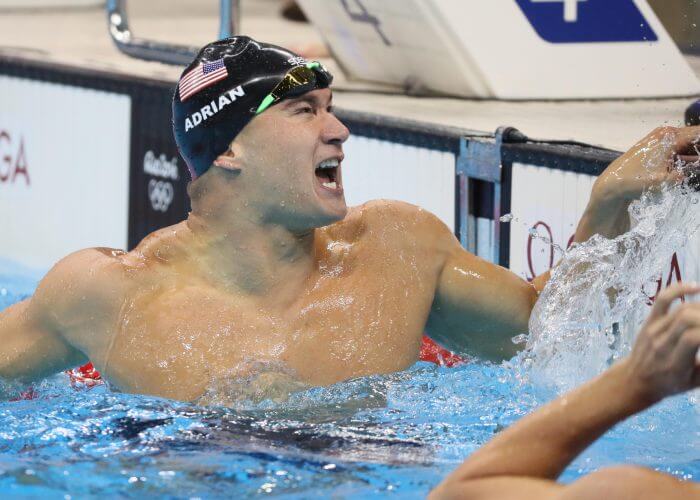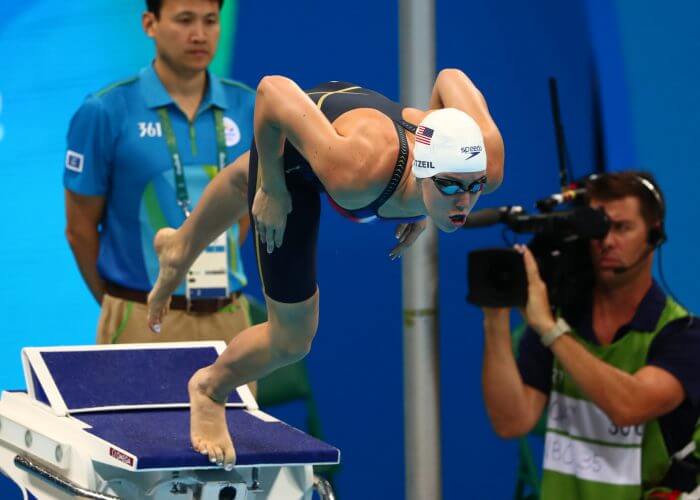American Sprinters Surging With 400 Free Relay World Titles in Sight

Morning Splash by David Rieder.
The last time the United States won gold in both the women’s and men’s 400 free relays at an Olympics or World Championships, at the 1998 World Championships in Perth, Australia, Caeleb Dressel and Simone Manuel were not yet two years old, and Mallory Comerford wasn’t yet a year old.
Two years later, the Australians knocked off Gary Hall Jr. and U.S. men for the first time ever at an Olympic Games. The Americans did not reclaim the gold medal in the event until the 2005 World Championships, and after a five-year win streak, a subsequent five-year lull culminated in missing the finals at Worlds in 2015.

Photo Courtesy: David E. Klutho-USA TODAY Sports
But last year at the Rio Olympics, the Americans won a statement gold medal in that relay. After years of searching for the right balance, the U.S. coaches combined veterans Michael Phelps and Nathan Adrian with international rookies Dressel and Ryan Held, and it worked.
As for the women’s relay, the U.S. finished second behind Australia at the 2004 Olympics and has only topped the podium once since at a major meet—when Megan Romano ran down Alicia Coutts on the anchor leg at the 2013 World Champs. Aside from a four-year Dutch reign in the event from 2008 to 2011, it has been all Australia since.
In Rio, it was something of an upset that the Americans stayed as close as they did to the Aussies, led by 100 free world record-holder Cate Campbell and 2015 World Champion Bronte Campbell. Abbey Weitzeil and Manuel gave the team a lead at the halfway point, and Dana Vollmer and Katie Ledecky over-achieved to finish only 1.24 seconds behind.
What’s changed this year? Well, come Budapest, there will be no sign of Cate Campbell. She announced earlier in the year that she’s taking the year off from the biggest international meet to prepare for the Commonwealth Games early next year.
With the world record-holder out of the picture, Australia’s top four swimmers this year are Bronte Campbell (52.85), Emma McKeon (53.12), Shayna Jack (53.40) and Madison Wilson (54.29). Brittany Elmslie is capable of much better than her season-best time of 54.38, but that’s as much as she had to give at Australia’s World Champs Trials in April.
Those top four times average out to 53.42, and while its conceivable the Americans could put up four marks that beat that average in Tuesday’s 100 free at U.S. Nationals in Indianapolis, it’s far from a certainty.. Manuel has been riding high since tying for Olympic gold in the 100 free last year, and she’s the clear domestic favorite in the event. But behind her, the pecking order is less clear.

Photo Courtesy: Rob Schumacher-USA TODAY Sports
Weitzeil has not been all that impressive this season, finishing eighth in the 100-yard free at her first NCAA championships, and Vollmer is out as she prepares to give birth. Ledecky’s 100 free ceiling is still unclear, and if she’s on the 400 free relay at Worlds, it would likely require racing that event after the individual 400 free final on the meet’s first night.
Can Comerford make a real contribution? She hold the No. 2 time among Americans so far this year, as her 53.91 from the Arena Pro Swim Series meet in Mesa (behind Manuel at 53.66). In a field full of strong options (Amanda Weir, Kelsi Worrell, Olivia Smoliga), Comerford has a high ceiling but yet-untapped long course potential.
Still, even without Cate Campbell in the mix, the women’s relay figures to be the much tougher challenge for the Americans to win, even before seeing how the races stack up at Nationals.
The U.S. field in the men’s blue-ribband event is that good? Sort of, but that’s not why the Americans are such big favorites. Just look what happened to their closest competition since Rio.
The French, on the podium at every major international meet since 2007 and the silver medalists in Rio, will not even enter a 400 free relay in Budapest. Even if they were to compete, Florent Manaudou taking a post-Olympic hiatus from racing would have crippled their medal hopes after Manaudou posted a 47.14 split in the Olympic final.
Australia won bronze in Rio as Kyle Chalmers provided a massive 47.38 split on the second leg. But Chalmers, who three days later won an individual gold in the 100 free, won’t be in Budapest, either, as he deals with a heart condition.
So who does that leave as the toughest competition? Russia finished fourth in the 400 free relay Rio, but so far this year, only Vladimir Morozov and Danila Izotov have even cracked 49. It’s actually Brazil that looks like the biggest threat right now, with Gabrielle Santos, Marcelo Cherighini and Bruno Fratus having been 48.5 or better this year.
As for the Americans, Adrian is the old man of the bunch, but the 2012 Olympic gold medalist in the 100 free hasn’t lost any pop to his stroke. He’s already posted a 48.18 in the 100 free this year, and he ranks fourth in the world going into Nationals.
The other favorites for that event are all 22 years old or younger. Dressel should have plenty of room to drop from his best time of 47.91, especially after what he did in his last trip to Indianapolis—40.00 in the 100-yard free at the NCAA championships in March.
Held has already swum in an Olympic relay final, and Blake Pieroni was a prelims swimmer for the U.S. in Rio. Michael Chadwick has already been as quick as 48.69 this year, the No. 2 time among Americans this year.
Obviously, what happens in the 100 free events in Indianapolis will tell a much clearer story, but with both 400 free relays stripped of explosiveness compared to last year, the American women and men should have clearer than normal paths to World titles.
All commentaries are the opinion of the author and do not necessarily reflect the views of Swimming World Magazine nor its staff.




Last year at the Olympic final of 4×100 freestyle relay Katie Ledecky lost to Cate Campbell 0.8sec.
Should she start ahead of Australian but not behind she wouldn’t have a problem swimming in most turbulent water. Cate Campbell would have such a “pleasure”. That would reduce the difference by ~ 0.3 sec.
Should she start 0.3 sec ahead of Cate Campbell but not 0.3 sec behind her that would make the race as 0.2sec close instead of 1.24 sec as it actually happened.
If to remember how fragile Cate Campbell was in Rio when she started too fast then putting her in chasing position could make her underperforming in relay as well but not making 51sec split.
All these could happen should Simone Manuel perform her part of relay as strong as she did it in individual or Medley relay races.
I don’t think this year American team will be stronger than the Olympian one that made two 52 and one 53 flat splits. The only way American ladies can win gold medal this year if Simone Manuel performs at her best.